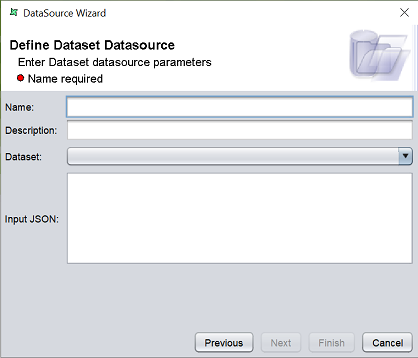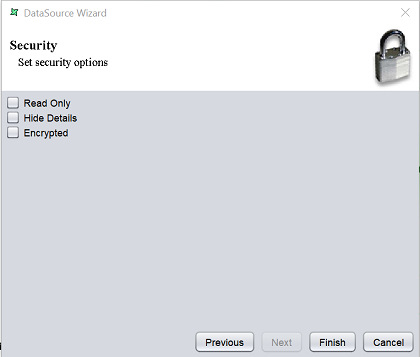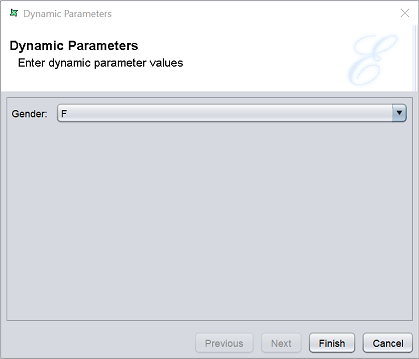Dataset Datasource
A Dataset datasource is a datasource is generated using the datasets accessed directly from the server. The different types of datasets, such as the usual MongoDB datasets, cached datasets, ETL datasets in the server can be used to generate the datasource.
To use the DataSource Wizard, right-click on the folder where the dataset datasource is to be created. The list of available actions will appear. Select the “Add” option, then the “Datasource” from the sub-options that appear.
The DataSource Wizard will appear. For Dataset datasource, there are three steps:
- Select datasource type
- Define datasource details
- Define security option
Select Datasource Type
In the first DataSource Wizard page, select “Dataset” from the list of available options, then click on the “Next” button.

Define Datasource Details
In this second page, the details of the dataset datasource need to be defined.

| Field | Description | Mandatory |
|---|---|---|
| Name | Name of dataset datasource. | Yes |
| Description | Brief description of dataset datasource. | No |
| Dataset | Selects the desired dataset from list. | Yes |
| Input JSON | Allows you to enter the JSON. | No |
Key in an unique name for the dataset in the “Name” field. In the “Description” field, enter a brief description for the dataset (optional). Select the desired dataset from the drop-down list in the “Dataset” field.
Once the dataset is selected, click on the “Next” button to continue.
The mandatory fields must be filled, else an error message will appear in the page with a red dot and the “Next” button will not be enabled.

List of Datasets
The list of dataset is obtained from the server, which can be Ambience or Repertoire. To allow the Designer to access the dataset from the server, add the following code in the application.conf file in the “bin” folder of the server.
elixir.sso.server.resource-owner-password-enabled = true
Security Option
The last page in the wizard for the dataset datasource allows you to set the security options for the datasource.

There are three options.
| Type | Description |
|---|---|
| Read Only | When selected and saved, the next time a user opens this datasource, the user will not be able to edit any details of the datasource (such as name, description and column names). |
| Hide Details | When selected and saved, the next time when this datasource is opened, the user will only be able to see the name and description of the datasource. |
| Encrypted | This is to be used with either Read Only or Hide Details options or both. Checking the checkbox will prompt the user to enter a password, then re-enter to confirm the password (both password must be the same). After this is done, if another user would like to edit any selections, he will need to enter the password. |
By default, none of the options are selected. Select the options are desired. More than one option can be selected. If “Encrypted” is selected, provide a password in the pop-up dialog box. Click on the “Finish” button to complete the process.
The new datasource will appear in the repository on the left.
You can change the security option of the datasource through the DataSource Wizard by clicking on the “Properties” icon at the Top Row in the Workspace after the datasource is selected. The third page in the DataSource Wizard allows you to change the security options.
Using Input JSON Field
The “Input JSON” field allows you to creata parameter for the dataset datasource. In the example below, the dataset contains information of employees.
{
"gender" : "${Gender#choice(F,M)#F}"
}
Once added into the field, click on the “Finish” button to save the change. To test the effect, click on the “Load Data” icon on the toolbar. The “Dynamic Parameters” dialog box will appear.

Select the desired option and click on the “Finish” button to load the data.

